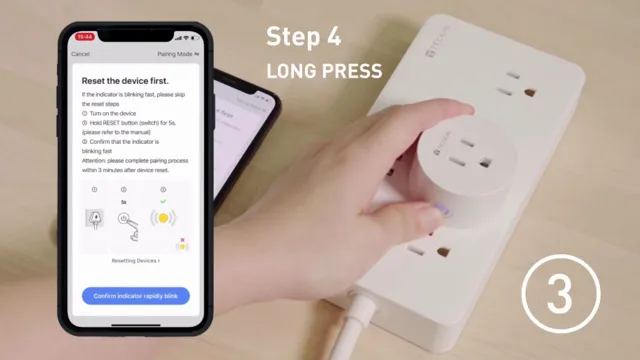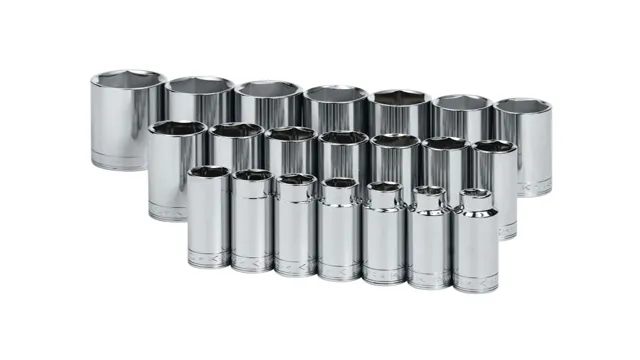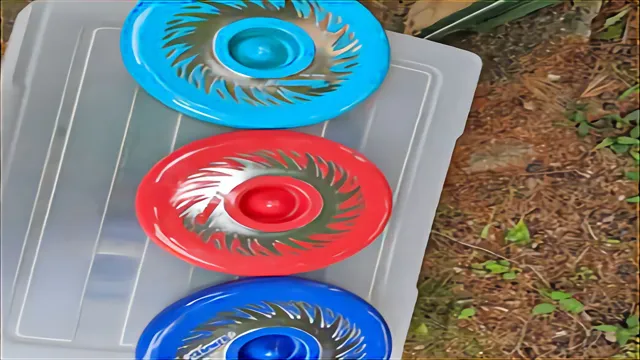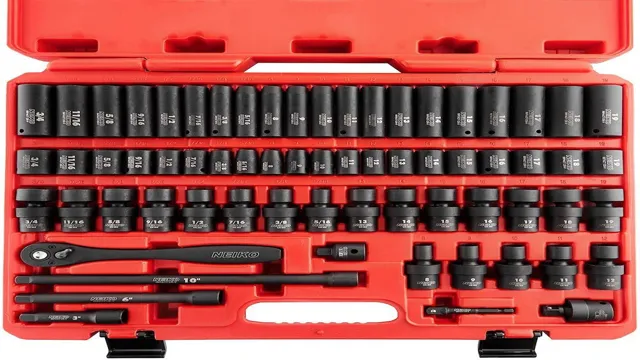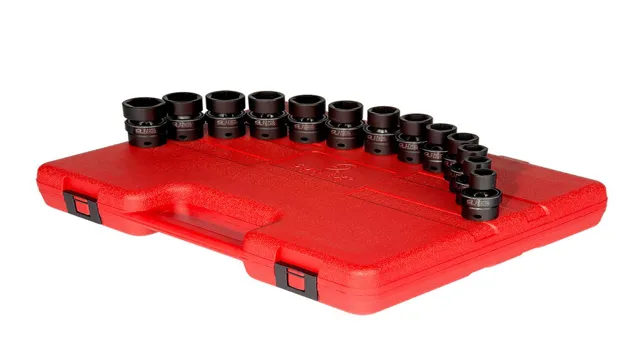How to Use a Ratchet Socket Set: A Step-by-Step Guide for Beginners

If you’re someone familiar with basic DIY projects, it’s always useful to have a ratchet socket set lying around. It’s a fantastic investment that can make your life easier and help save time. Whether it’s fixing a car or doing household repairs, a ratchet socket set is a versatile tool that’s worth having.
The question is, how do you use it? You might have seen one before, but you’re unsure of what all the pieces are or how to use them. Don’t worry; we’re here to help you out. In this blog, we’ll go over the basics of how to use a ratchet socket set so that you can confidently tackle your next project without breaking a sweat.
Gather Your Materials
If you’re looking to learn how to use a ratchet socket set, the first step is to gather all of your materials. This includes the socket set itself, as well as any additional accessories that may be required for your project.
It’s also important to make sure that you have all the necessary safety equipment, such as gloves and safety glasses, to protect yourself while working. Once you’ve gathered all of your materials, it’s crucial to familiarize yourself with the sockets and their sizes.
This can be done by organizing them by size and labeling them accordingly, so you can easily find the right tool for the job when you need it. By taking the time to gather your materials and get organized, you’ll be well on your way to mastering the art of using a ratchet socket set.
Identify the Socket Sizes
When it comes to identifying socket sizes, the first step is to gather all the necessary materials. This includes a socket set with various sizes, a ruler or tape measure, and possibly a reference chart or manual. Once you have these items handy, it’s time to start identifying the sizes of your sockets.
The easiest way is to simply look at the markings on the socket itself. Most sockets will have a numeric marking indicating their size in either inches or millimeters. If the socket is not marked, you can use your ruler or tape measure to measure the distance between the two opposite corners of the hexagonal head.
This measurement will give you the socket’s size. Finally, if you are still unsure, you can refer to your manual or chart for a complete list of socket sizes and their corresponding measurements. By following these steps, you can quickly and easily identify socket sizes for all your DIY needs.

Locate the Ratchet Wrench
When it comes to DIY projects, gathering the necessary materials is key for a successful outcome. One of the most important tools you’ll need for your next project is a ratchet wrench. Before you can get to work, you’ll need to locate it in your toolbox.
But where to begin? First, take a moment to survey your tools and equipment. If you have a well-organized toolbox, your ratchet wrench may be stored in an easily-accessible compartment. If not, dig around a bit until you find it.
Don’t worry if you have trouble locating it at first. The key is to stay patient and persistent until you find it. With a little effort, you’ll be ready to get started on your project in no time!
Using the Ratchet Socket Set
If you’re looking to do some DIY work around the home or on your car, a ratchet socket set is an essential tool that you’ll need. But if you’ve never used one before, you may be wondering how to use it. Firstly, you’ll need to choose the right socket size for the job.
Once you’ve found the right size, place it onto the ratchet and tighten it firmly. Next, position the socket over the nut or bolt you need to loosen or tighten and ensure that it is securely in place. Finally, using a smooth, consistent motion, turn the ratchet handle in a clockwise direction to tighten the nut or bolt, or counterclockwise to loosen it.
With a little practice, using a ratchet socket set will become second nature!
Choose the Correct Socket Size
When using a ratchet socket set, it’s essential to choose the correct socket size. The right size is a crucial aspect of a smooth, quick, and efficient job. But how do you choose? The first thing to look for is the bolt or nut’s dimension that you need to loosen or tighten.
Measuring it with a caliper is the best way to determine the exact size. A socket that is too small might strip the bolt head or nut, while a socket that is too large can slip or round off the edges of the bolt and cause damage. Additionally, a ratcheting socket set with both metric and SAE sizes ensures you have the right tool for any job.
So, take your time and choose the right socket size because no one wants to halt a project in the middle or damage a bolt head by using the incorrect size.
Insert the Socket onto the Ratchet Wrench
When it comes to using a ratchet socket set, one of the most important steps is inserting the socket onto the ratchet wrench. This might seem like a simple task, but it can actually be a bit tricky for those who are new to using this type of tool. To start, you’ll want to find the appropriate socket for your job and then slide it onto the end of the ratchet wrench.
You’ll then want to push the socket down onto the square drive on the ratchet until it clicks into place. Once it’s securely in place, you can begin using the ratchet to tighten or loosen bolts, nuts, or other fasteners. Of course, the process may vary slightly depending on the specific ratchet socket set you’re using, but these general guidelines should help get you started.
By taking your time and making sure the socket is properly seated on the wrench, you can ensure that you get the intended results from your work.
Tighten or Loosen the Nut/Bolt
If you’re looking to tighten or loosen a nut or bolt, using a ratchet socket set is an excellent choice. This versatile tool allows you to adjust the tightness of a fastener quickly and easily. It’s especially great for hard-to-reach areas where a standard wrench won’t fit.
First, you’ll need to select the correct size socket for the nut or bolt you want to loosen or tighten. Then, slip the socket onto the ratchet handle and position it over the fastener. Turn the ratchet handle in the direction you want to adjust the nut or bolt.
You’ll hear a clicking sound as the ratchet locks onto the fastener, allowing you to turn it without having to reset your grip. If you’re tightening, apply firm pressure until you feel resistance. If you’re loosening, turn the handle counterclockwise until the nut or bolt starts to turn.
With a ratchet socket set, you can tighten or loosen nuts and bolts quickly and efficiently, making it an essential tool for any toolbox.
Tips and Safety Precautions
If you’re going to be using a ratchet socket set, there are a few things you should keep in mind in terms of both safety and performance. Firstly, it’s important to make sure you’ve got the right sized socket for the job, as forcing the wrong size can be dangerous and can damage the parts you’re working on. Additionally, it’s wise to wear proper protective gear, such as gloves and eye protection, to avoid any injuries from flying debris or other hazards.
When using the ratchet, make sure you’re applying even pressure and not over-tightening, which can cause parts to break or become stripped. Lastly, always store your ratchet socket set in a safe, dry place to prevent rust and other forms of damage. By following these tips and taking proper safety precautions, you can use your ratchet socket set effectively and safely for all kinds of jobs.
Keep the Set Clean and Organized
Keeping a clean and organized set is essential for the safety and efficiency of any workplace. Here are some tips and safety precautions to follow when working on a set. Firstly, make sure to regularly inspect the set for any debris or obstacles that could cause accidents or impede movement.
It’s also important to keep walkways and exits clear for easy evacuation in case of an emergency. Make sure to store equipment and props in their designated areas when they’re not in use to avoid clutter and tripping hazards. Another important tip is to properly dispose of any hazardous materials, such as sharp objects or chemicals, to prevent injuries.
Lastly, always wear the appropriate safety gear when working with potentially harmful equipment or environments. By following these guidelines, you can ensure a safe and efficient set that promotes productivity and creativity.
Wear Safety Gear
As the old saying goes, it’s better to be safe than sorry. And when it comes to activities like biking, skateboarding, or rollerblading, wearing safety gear is a must. This includes a helmet, knee and elbow pads, and wrist guards.
Not only can wearing safety gear protect you from severe injuries, but it can also give you a peace of mind and make you feel more confident while participating in your activity of choice. Just imagine flying down a hill on a skateboard without a helmet; it’s not worth the risk. Investing in quality safety gear may seem expensive, but it’s a small price to pay compared to the high cost of long-term medical bills or the potential for a lifetime of pain.
So, whether you’re a pro or a beginner, don’t forget to wear your safety gear and keep the risk of injury to a minimum.
Conclusion
In conclusion, using a ratchet socket set is like being a Jedi with a lightsaber – it’s all about finesse, precision, and using the right tool for the job. From loosening stubborn bolts to tightening nuts with ease, a ratchet socket set is an essential item in any handyman’s arsenal. So, put on your tool belt, tap into the force, and let the ratchet do the work for you.
May the torque be with you!
FAQs
What is a ratchet socket set used for?
A ratchet socket set is used for tightening or loosening nuts and bolts with different sizes and shapes.
How do you use a ratchet socket set?
To use a ratchet socket set, select the appropriate socket size, attach it to the ratchet, and place it onto the nut or bolt. Turn the ratchet to tighten or loosen the nut or bolt.
What are the different types of ratchet socket sets?
There are various types of ratchet socket sets available in the market, including standard sets, deep well sets, impact socket sets, and spark plug socket sets.
Can a ratchet socket set be used with power tools?
Yes, some ratchet socket sets are compatible with power tools, such as impact wrenches and drills.
How often should you maintain your ratchet socket set?
It is recommended to clean and lubricate your ratchet socket set after each use, and store it in a clean and dry place to prevent rust or damage.
What should you look for when buying a ratchet socket set?
When buying a ratchet socket set, consider the size and shape of the sockets, the durability and strength of the ratchet, and the compatibility with your specific needs and tasks.
Can a ratchet socket set be used for DIY projects?
Yes, a ratchet socket set is a useful tool for DIY projects, such as fixing or assembling furniture, repairing bikes or cars, and many other tasks that involve nuts and bolts.


